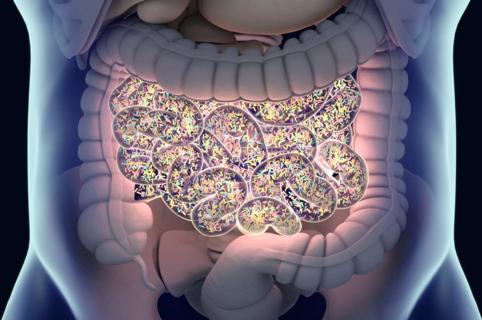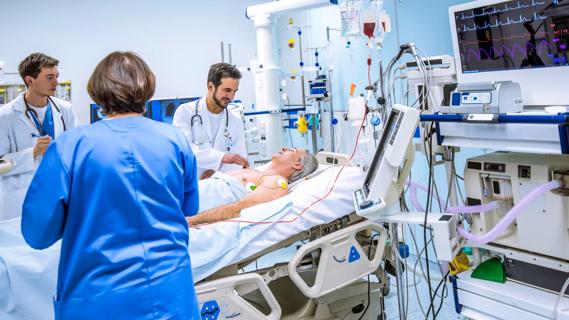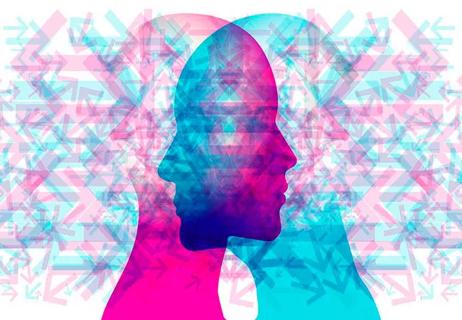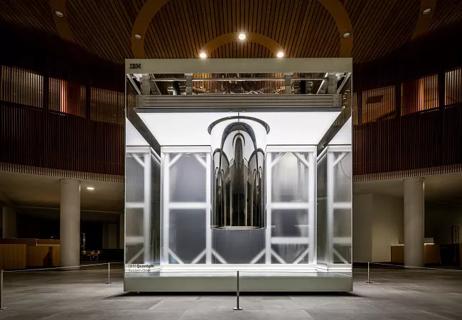Research in bionic technologies leads to prosthetic control, sensation and proprioception
Advertisement
Cleveland Clinic is a non-profit academic medical center. Advertising on our site helps support our mission. We do not endorse non-Cleveland Clinic products or services. Policy
There are approximately 2 million amputees living in the United States today, yet the standard of care for prosthetics reached its zenith after World War II with the development of cable-operated and motorized limbs. Paul Marasco, PhD, an associate professor in the Department of Biomedical Engineering in Cleveland Clinic’s Lerner Research Institute, is investigating new bionic systems to improve the standard of care for patients with upper limb amputations.
“What bionic technologies have done — what we really work on — is providing more simultaneous degrees of freedom,” he says. “So the idea is that we can control multiple joints simultaneously, much more like a human arm works, versus the sequential control that typical standard-of-care prosthetics use.”
Dr. Marasco discusses advances in prosthetic function and his work in the Laboratory for Bionic Integration in the most recent episode of Cleveland Clinic’s Neuro Pathways podcast, including:
Click the podcast player above to listen to the episode now, or read on for a short edited excerpt. Check out more Neuro Pathways episodes at clevelandclinic.org/neuropodcast or wherever you get your podcasts.
Advertisement
Podcast host Glen Stevens, DO, PhD: Can you talk to me about the area of targeted sensory and motor reinnervation?
Dr. Marasco: After an amputation, the remaining nerves are just left blind-ended in the arm, but they still contain all the neural control and feedback information. And so what you can do is to deinnervate the muscles at the amputation site and provide a receptive environment to surgically transfer these amputated limb nerves to, and then they’ll actually compete for reinnervation targets in the muscle.
It was a serendipitous discovery, but it turns out that if you deinnervate the skin as well, the sensory nerves will actually reinnervate the skin itself. They’ll move their way out and find new receptive neural targets in the skin. And so what you end up with is a biological neural-machine interface. Essentially what happens is that the amputee thinks about moving their arm the way that they used to. That signal goes down the nerve and instead of going to the muscles of the arm that it used to control, it now goes to reinnervated targets in the residual limb muscles. And then those muscles contract just like they did before they were amputated, only now the contraction maps to that person’s thought about how they want to move the arm versus its original function. And we go in with a computerized prosthesis and we can read those individual little contractions in different and nuanced ways to essentially intuitively control a prosthetic limb. So the way that it works now is the person with an amputation thinks about moving and the prosthesis responds accordingly.
Advertisement
On the sensory side of things, sensory nerves actually reinnervate the skin, and it turns out they also reinnervate the muscles, which is one of the primary areas where we work. To get the feedback, we use small robots that touch the reinnervated skin, and then we map that to the digits of the prosthesis. So when the sensors on the prosthesis feel touch, the robot translates that information to little robotic devices that push on the reinnervated skin. And then the amputee feels that touch as though it’s actually their own hand.
And then it starts getting really exciting from the proprioceptive perspective, where we leverage perceptional illusions of limb movement by vibrating the reinnervated muscle sensory receptors. It turns out that your muscles have sensors inside them that tell you what your limbs are doing. So we go in and we use cognitive and perceptual approaches to essentially tap into a person’s perceptual integration system and then push in illusions of complex grip confirmations. And so my lab works on cognition and perception, and we actually can provide these really highly detailed synergistic grip percepts of the hand closing into a fist or down into a pinch and all sorts of different things.
Advertisement
Advertisement

First full characterization of kidney microbiome unlocks potential to prevent kidney stones

Researchers identify potential path to retaining chemo sensitivity

Large-scale joint study links elevated TMAO blood levels and chronic kidney disease risk over time

Investigators are developing a deep learning model to predict health outcomes in ICUs.

Preclinical work promises large-scale data with minimal bias to inform development of clinical tests

Cleveland Clinic researchers pursue answers on basic science and clinical fronts

Study suggests sex-specific pathways show potential for sex-specific therapeutic approaches

Cleveland Clinic launches Quantum Innovation Catalyzer Program to help start-up companies access advanced research technology